Key production costs in black soldier fly farming: Evaluation and business impact
Black Soldier Fly (BSF) farming is gaining traction as a sustainable solution for organic waste management and high-protein feed production. However, understanding and managing production costs of the farming is critical to ensuring profitability. Below, we break down the most important production costs, their impact on output quality and quantity, and their role in pricing and business viability.
Key production costs
Feedstock costs (the substrate)
Importance: Often the largest variable cost in BSF farming is feedstock, which can include food waste, agricultural byproducts or commercial feed blends.
Evaluation:
Cost vs. nutritional value: Lower-cost substrates (e.g. manure or low quality fruit/vegetable waste) may reduce expenses but could impact larval growth rates and protein content.
Consistency & availability: Fluctuations in feedstock quality can affect output quantity and require adjustments in processing.
Business impact: Optimizing feedstock sourcing (e.g., partnerships with food processors, farmers, HoReCa) can reduce costs while maintaining high-quality output.
Labor costs
Importance: Labor is required for substrate preparation, larvae harvesting as well as pre- and post-processing. Automation can reduce costs but requires capital investment and in small scale it is not typically relevant.
Evaluation:
Manual vs. automated systems: Small-scale farms rely on manual labor, while larger operations may benefit from mechanized harvesting and sorting. However, even fancy equipment need setup, maintenance, spare parts and often someone to monitor the operation, so the threshold to use robotics or automation should be kept high and calculated well in advanced for ROI.
Efficiency metrics: Labor costs per kg of larvae produced should be benchmarked against industry standards.
Business impact: High labor costs can erode margins, making semi-automation essential for scaling at industrial level.
Energy & climate control costs
Importance: BSF larvae thrive in warm, humid conditions, requiring heating (in colder climates), humidifying and ventilation systems.
Evaluation:
Energy efficiency: Renewable energy (e.g. solar) or waste heat recovery can lower expenses.
Impact on growth rate: Suboptimal temperatures and humidity levels slow down the production cycle, reducing output.
Business impact: Energy-efficient designs improve cost-effectiveness, especially in large-scale farming. Climate control systems such as the Manna MIND have become affordable and available even for small scale farmers, starting at under 1.000 USD capital expenditure.
Processing & drying costs
Importance: Post-harvest processing (drying, milling, etc.) affects product quality and shelf life.
Evaluation:
Drying method: Sun drying is cheap but inconsistent; mechanical drying is faster but energy-intensive.
Protein retention: Overheating during drying can degrade protein quality, affecting market value.
Business impact: High-quality processing and the level of post-processing may justify premium pricing in animal feed markets.
Facility & infrastructure costs
Importance: Initial setup (bins, breeding systems, waste management) requires significant investment when using fixed facilities, less when using e.g. refurbished sea containers or old green houses, etc. that do not need fixed electricity, plumbing and more.
Evaluation:
Scalability: Modular designs allow gradual expansion, reducing upfront costs.
Maintenance: Durable materials lower long-term repair expenses.
Business impact: Efficient facility design improves ROI over time.
Regulatory & certification costs
Importance: Compliance with feed safety standards (e.g. EU regulations) may require lab testing and certifications.
Evaluation:
Market access: Certified products command higher prices in regulated markets.
Cost-benefit: Weigh certification costs against potential premium pricing.
Business impact: Certification opens doors to higher-margin markets (e.g. aquaculture, pet food).
Pricing & business case considerations
To ensure profitability:
Calculate cost per kilogram: Compare total production costs against market prices for BSF larvae, oil or frass.
Assess value-added opportunities: Processed products (defatted meal, chitin) increase revenue streams.
Market demand alignment: Premium markets (organic poultry feed, aquaculture) tolerate higher prices if quality is proven.
Conclusion
Managing production costs in BSF farming requires balancing input quality, operational efficiency and market positioning. By optimizing feedstock, labor and energy use while ensuring high processing standards, farmers can build a sustainable and profitable BSF business. Regular cost-benefit analysis ensures competitiveness in the rapidly growing insect protein sector.
Learn more about BSF farming in the
Insect Farm Hub!
Manna Insect has launched a comprehensive insect farming platform designed for learning, managing, monitoring and networking. There are tons of free content about insect farming, as well as a lot of paid premium content, that dives even deeper in black soldier fly business.
Do you already follow us in LinkedIn? We share insights and news about insect farming and BSF business daily in Manna Insect LinkedIn page, come and join the discussion!
Cover pic by Nattanan Kanchanaprat from Pixabay
Read also: Building a professional level BSF farm for under $10,000
